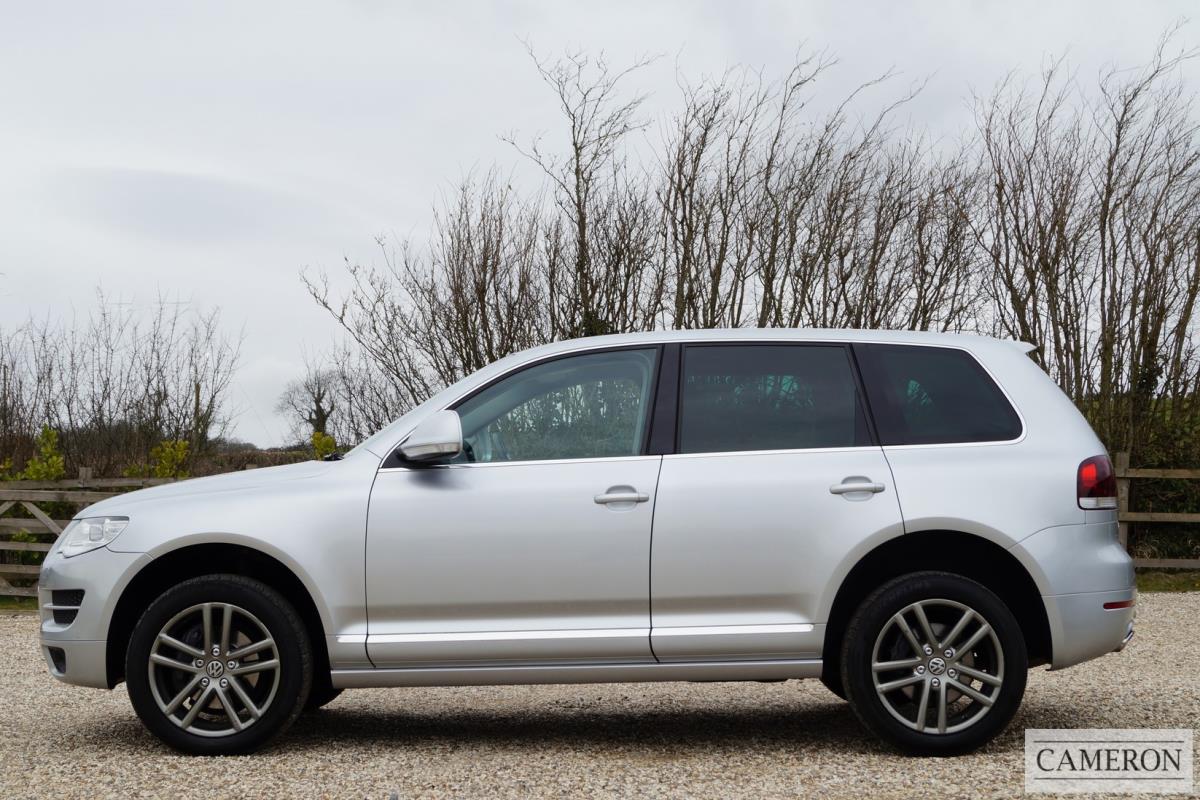There are four ex-Formula One drivers - Italians Gianni Morbidelli and Emanuele Naspetti, Swiss Andrea Chiesa and Johnny Herbert of Great Britain - all of whom drove in the South African Grand Prix at Kyalami. Morbidelli has won the last three Superstars championships and, together with Chiesa, was here for last year’s inaugural Kyalami round. Naspetti and Herbert are making their first appearance in the series. Superstars returns to Kyalami courtesy of Blue IQ and the Gauteng provincial government and will share a three-day feast of top class motor racing with the final round of the WesBank Super Series. Gianni Morbidelli, 42, is from Pesaro in Italy and drives a Team BMW Italia BMW M3. He won his third successive Superstars Series championship in 2009. He competed in 70 Formula One Grands Prix from 1990 to 1997 for Dallara, Minardi, Ferrari, Footwork and Sauber, achieving one podium. He drove for Minardi in the 1992 South African Grand Prix at Kyalami.

In 2006 the new Passat will be available in three different engine versions with the latest 4MOTION system. The top model of the Passat range, the 184 kW / 250 PS Passat 3.2 V6 FSI 4MOTION, has the most effective form of power distribution as standard. The 4MOTION drivetrain is available as an option with the Passat 2.0 FSI (110 kW / 150 PS) and the Passat 2.0 TDI (103 kW / 140 PS). The permanent four-wheel drive system is available for the Passat saloon and estate in combination with all equipment lines (3.2 V6 FSI 4MOTION: starting with the Comfortline). Permanent four-wheel drive also enhances the handling of the Golf, Sharan, Multivan, Phaeton, and Touareg. Volkswagen has been building Passat's with four-wheel alongside front-wheel drive for over two decades; the first model, the Passat estate GT syncro, was launched in 1984. To date over 256,000 Passat drivers worldwide have opted for four-wheel drive. The Passat comes equipped for the first time with a 4MOTION system featuring Haldex coupling. The coupling, which is fitted directly in the rear axle, is considerably more compact and the system works quickly, sensitively, and quietly. Four-wheel drive also delivers major advantages for towing trailers.
The Passat 3.2 V6 FSI 4MOTION, for example, pulls a hefty maximum trailer weight of 2 200 kg on uphill grades of up to 12 percent. Its gross weight rating for the rear axle is 1 220 kg. The central element of the 4MOTION system is a multi-plate wet coupling (in an oil bath). It is called the Haldex coupling as it was developed together with Swedish systems partner Haldex who have worked with Volkswagen for many years. The Haldex coupling has the major advantage of being electronically controlled and having a very fast response. As soon as differences in the speeds of rotation between the front and rear axles occur two annular piston pumps are activated which build up pressure in the multi-plate coupling (Haldex system) thus "coupling" the two axles to each other. The transmitted torque can be varied by adjusting the pressure on the coupling plates, thus controlling the flow of power between the front and rear axles. The coupling provides an infinitely variable torque transfer between the front and rear axles. In extreme cases up to 100 percent of the available torque can be transmitted to the rear axle. The coupling responds to "commands" from the 4MOTION electronic control unit extremely quickly. As soon as the Haldex coupling registers front axle slip, the required torque is transmitted to the rear axle. The compact coupling can transmit a torque of 3 200 newton metres to the rear axle.
 BRETTON WOODS, New Hampshire — Hats off to Honda: Every automaker claims to be committed to the ever-shrinking mid-size sedan market, but Honda seems to be the only one actually doing something about it. While other brands keep giving us the same three boxes in slightly reskinned packages, the all-new 2018 Honda Accord is the only midsize sedan that feels genuinely all-new. My editor would like me to get straight to the driving experience—which is just dandy, I assure you—but the changes to the Accord’s physical manifestation are the big story, so let’s get through those as quickly as possible. The new Honda Accord sports the same fastback shape as the Civic, and it wears it well. The grille is a bit fussy and the chrome-trimmed rocker panels on the Touring model are a bit silly, but the all-LED headlights (standard on all models) look cool and futuristic and the taillights are slicker than goose droppings. Besides, when it comes to design, proportion is king, and the Accord rocks it.
BRETTON WOODS, New Hampshire — Hats off to Honda: Every automaker claims to be committed to the ever-shrinking mid-size sedan market, but Honda seems to be the only one actually doing something about it. While other brands keep giving us the same three boxes in slightly reskinned packages, the all-new 2018 Honda Accord is the only midsize sedan that feels genuinely all-new. My editor would like me to get straight to the driving experience—which is just dandy, I assure you—but the changes to the Accord’s physical manifestation are the big story, so let’s get through those as quickly as possible. The new Honda Accord sports the same fastback shape as the Civic, and it wears it well. The grille is a bit fussy and the chrome-trimmed rocker panels on the Touring model are a bit silly, but the all-LED headlights (standard on all models) look cool and futuristic and the taillights are slicker than goose droppings. Besides, when it comes to design, proportion is king, and the Accord rocks it.